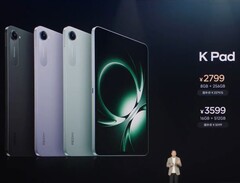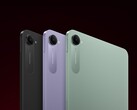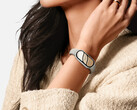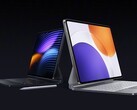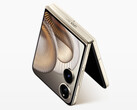Xiaomi just officially announced the Redmi K pad; a mini tablet directly targeted at the Apple iPad Mini 7. Throughout the announcement, Xiaomi compared its specs to that of the iPad Mini (2024), in a bold attempt to take its position as the best mini tablet. Let's take a look at how it compares to its intended competitor, starting off with the processors.
The Redmi K Pad uses the octa-core MediaTek Dimensity 9400+ processor, which is built on the 3 nm architecture, and can clock up to 3.63 GHz. The iPad Mini 7 on the other hand uses the Apple A17 Pro processor, which is a hexa-core processor built on the 3 nm architecture, and can clock up to 3.78 GHz.
The Redmi K Pad features an 8.8-inch, 2.5k IPS LCD. The device also has 165 Hz screen refresh rate, 372 Hz touch sampling rate, and 403 PPI. The iPad Mini 7 features an 8.3-inch, 2k IPS LCD. Its display has a maximum refresh rate of 60 Hz, 120 Hz touch sampling rate, and 327 PPI. The K Pad's screen has a thinner 8:5 aspect ratio and 700 nits of peak brightness, compared to the Mini 7's 9:6 and 500 nits.
For heat control, the K Pad uses a 12,050 mm2 liquid cooling system, while the Mini 7 relies on a passive cooling system. Both tablets have stereo speakers that peak at 80.2 dB and 71.6 dB respectively.
In the power department, the K Pad is powered by a 7,500 mAh battery and supports 67 W charging. The Mini 7 on the other hand makes do with a 5,078 mAh battery and 20 W charging. Xiaomi's new mini tablet has a side-mounted USB-C 3.2 Gen 1 port, while the Mini 7 has a USB-C 3.1 Gen 2 port.
The Redmi K Pad has a launch price of CN¥2,799 ($391) for the 8/256 GB variant, undercutting the Apple iPad Mini 7's (curr. $577.50 on Amazon) launch price of CN¥5,799 ($810) for its 8/256 GB variant. The Redmi K Pad is launching with 5 variants: 8/256 GB, 12/256 GB, 12/512 GB, 16/512 GB, and 16/1 TB.
NB: This article is based on lab-measured specs and performance, real world performance may vary.
Source(s)
Xiaomi via X




